#Newlyn School of Artists
Text
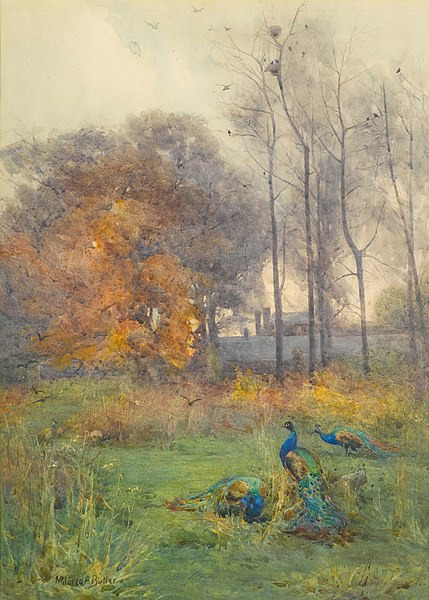
Mildred Anne Butler (1858-1941)
"Autumn Days" (1928)
#paintings#art#artwork#landscape painting#peacock#mildred anne butler#fine art#irish aritst#woman artist#women artists#female artists#peacocks#birds#animals#trees#1920s#early 1900s#early 20th century#newlyn school
245 notes
·
View notes
Text
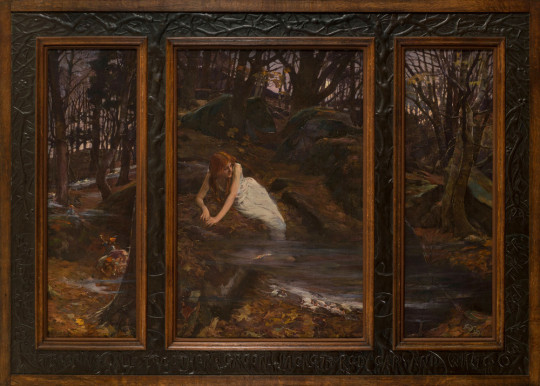
Elizabeth Adela Armstrong Forbes - Will-o’-the-Wisp (ca. 1900)
Elizabeth Adela Armstrong Forbes based her painting “Will-o’-the-Wisp” on the symbolic poem “The Fairies” by Irish poet William Allingham. She depicts the story of Bridget, who was stolen by “wee folk” and brought to the mountains for seven years. Upon returning to her village, Bridget discovers that all of her friends are gone.
Set in autumn with bare trees silhouetted against a moonlit sky, the triptych’s dark rocks, swirling mist, and eerie glow add to the mystical aura surrounding Bridget, the “stolen child…dead with sorrow…on a bed of flag leaves.” In the left panel, little forest denizens, who in Irish legends often entice young girls with sensory pleasures, troop through the forest.
“Will-o’-the-Wisp” displays the tenets of the Newlyn Art School in its meticulous portrayal of natural detail. Yet the work’s mythical world is characteristic of late Pre-Raphaelite paintings. So too is the elaborately hand-wrought oak frame, which incorporates sheets of copper embossed with intertwined tree branches. Lines from Allingham’s poem inscribed on the frame allude to the centuries-old philosophical dialogue between the relative artistic merits of painting versus poetry. (source)
80 notes
·
View notes
Text
Artist Research
Rachel Duck House
Born in 1975, Rachel Duckhouse grew up in Nuneaton before studying at Leeds College of Art and Winchester School of Art, moving to Glasgow in 1998, where she now lives and works.
Her drawing practice explores structures, patterns and flows within landscapes and the dynamic relationships between things (particularly architecture, water, light and memory). Her research often combines observation, conversation, walking, archive research and sketchbook drawing, to explore the connection between inner and outer worlds through imagined geometries, patterns and places.
She’s undertaken research based residencies in Canada, Australia and the Outer Hebrides, and has exhibited her work in Europe, North America, New Zealand and Singapore. She’s worked on several public art commissions, including the entrance gates to the newly redeveloped Edinburgh Printmakers. Her drawings, etchings and screenprints have been acquired by collections including The British Museum, Great Ormond Street Hospital in London and Albert Einstein College of Medicine, New York.
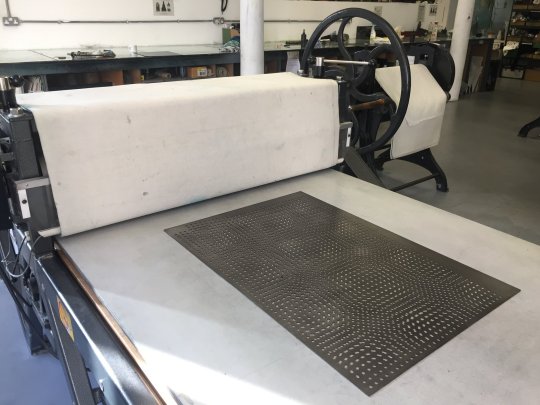
Water jet cut moiré pattern (originally screen printed) on steel for relief etching at Glasgow Print Studio.
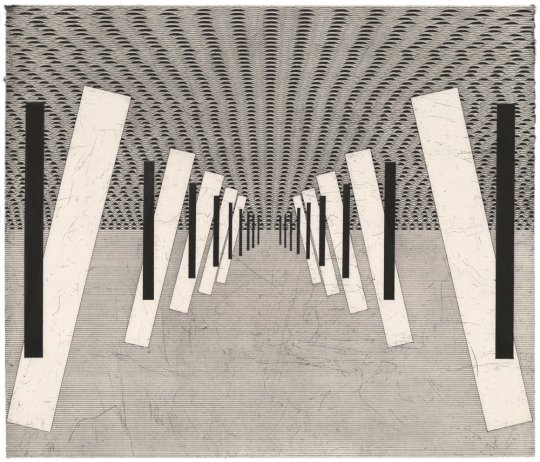
Over and Out (Newlyn)
Etching with pen and ink drawing

Green Fold
Screenprint
1 note
·
View note
Text

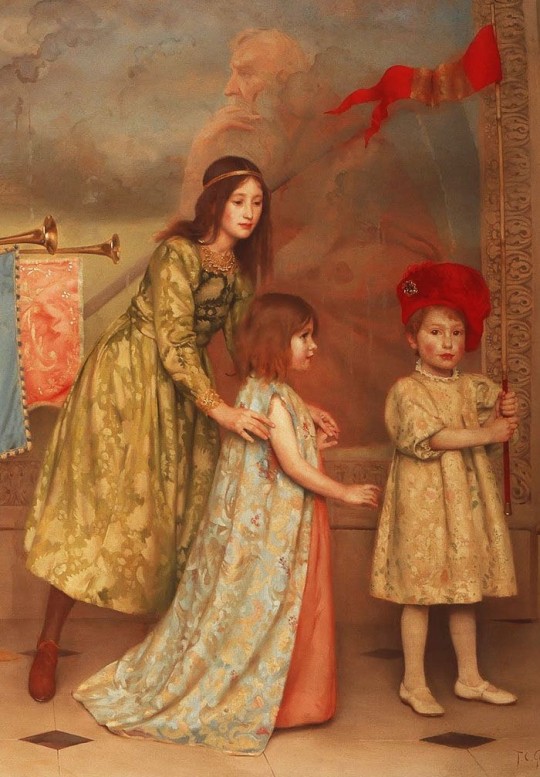

A Pageant of Childhood | (1899) | by Thomas Cooper Gotch
In the venerable halls of British art history, Thomas Cooper Gotch, (10 December 1854), is firmly established as an enthusiastic exponent of late Impressionism, Symbolism and Pre-Raphaelitism. This highly talented painter was also an important pillar of the Newlyn School, a colony of artists who vigorously stirred the waves of the art world with their creative spirit in the late 19th and early 20th centuries. Gotch's life path is an ode to the incessant artistic spirit, a trail of light and color.
0 notes
Text
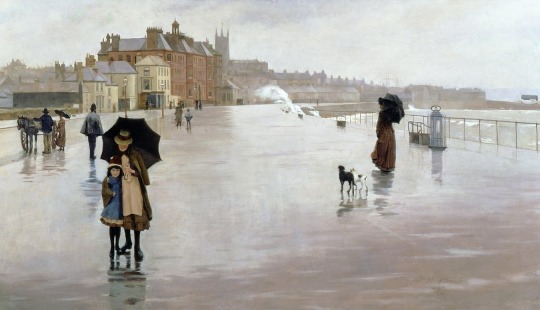
The Rain It Raineth Every Day.
Norman Garstin, 1889.
I was just about to get ready to go on my early morning walk when it started blummin' chuckin' it down. I couldn't find a painting on the Internet to adequately match my mood, so this one will have to do, due to the art history factor.
Acc. to Wikipedia:
Norman Garstin (1847-1926) was an Irish artist, teacher, art critic and journalist associated with the Newlyn School of painters. This was an art colony of artists based in or near Newlyn, a fishing village adjacent to Penzance, on the south coast of Cornwall, from the 1880s until the early twentieth century. The establishment of the Newlyn School was reminiscent of the Barbizon School in France, where artists fled Paris to paint in a more pure setting emphasising natural light. These schools, along with a related California movement, were also known as 'En plein air'. Plein-air painting is the act of painting outdoors.
The painting depicts the seafront between Newlyn and Penzance in windy and rainy weather. The use of negative space shows influence from French painter Edgar Degas, whom Garstin met when studying in Paris. Garstin sent the painting to the Royal Academy in 1889 but it was not selected for exhibition, possibly because the jury considered it was "too French" in style. The artist donated the work to Penzance Town Council, but it was not exhibited for some time after it was acquired, due to concerns that tourists would not wish to see Penzance in the rain.
I'm not massively interested in most art or history after the end of the 16th century, to be honest, but it has to be covered if I am to learn about the history of all civilisation from day dot. I tend to ignore Oriental art and history for the same reason - not my cup of camomile. Just personal preference, that's all. In a nutshell, just to be clear, my real interest lays in the art, history and religions of ancient and medieval Europe, Russia and the Near/Middle East. And cheese, which I am about to have for my breakfast on a slice of toast.
Thanks for reading and I hope you all have a nice day, even if it is blummin' raining and scuppering your plans like it is mine!
1 note
·
View note
Photo
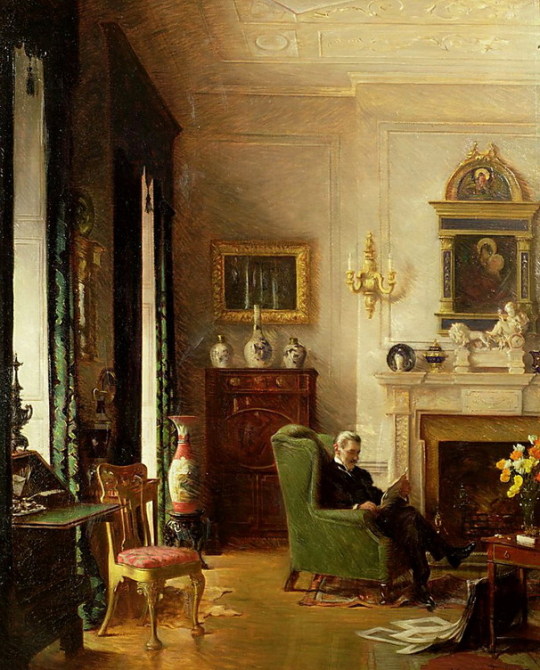
The Grey Drawing Room, (1917) by Albert Chevallier Tayler
Born in Leytonstone, Essex, in 1862 to a legal family, Albert Chevalier Taylor won a scholarship to the Slade School when he was 17. Having completed his education, he moved to Newlyn in 1884 and became one of the ""Newlyn Artists"", although he frequently also painted commissions elsewhere. In 1887, Taylor exhibited at the Royal Academy but he continued to work mainly in Newlyn. In 1891 he won a medal at the Paris Salon and from 1893 his subjects changed from fishermen to dinner parties and drawing rooms. In 1895 he moved to London and this is how he became a fashionable and successful artist with many commissions. In 1910 he became a full Member of the Royal Academy, exhibiting 49 paintings in total at the Academy, and he was also the Honorary Secretary of the Royal British Colonial Society of Artists. Albert Chevalier Taylor died in 1925. --Artbol
1 note
·
View note
Photo

@nikmosley I was born in Hong Kong and spent my childhood in the Far East living by the sea which has had a huge influence in my life and work. I moved to Paris in 1990 where I studied at Parsons School of Design. In 1997 I moved to Houston, Texas and studied Fine Art at The Glassell School of Art, the teaching wing of The Museum of Fine Art and exhibited extensively in solo and selected group exhibitions. I moved to Cornwall in 2014 and took on a studio at Krowji in Redruth. I studied at The Newlyn School of Art completing the fourteen week landscaping course and in 2016 I studied at Falmouth Art School’s Summer Intensives. In 2017 I became an Associate Member of Penwith Gallery in St. Ives and have exhibited in their selected group exhibitions. In 2020 I moved from my studio at Krowji to work from my new studio overlooking Falmouth harbour. My work is in private collections both nationally and internationally. https://theflyingfruitbowl.co.uk/2023/01/24/nicola-mosely/ Link in bio! 👀 #art #artist #creativeprocess #fineart #skypainting #painter #skyscape #landscapepainting #landscapeart #painters #fineartist #contemporaryart #artisttofollow #artpodcast #artwebsite #opencallforartists #painting #seapainting https://www.instagram.com/p/CnzCNkmIiu7/?igshid=NGJjMDIxMWI=
#art#artist#creativeprocess#fineart#skypainting#painter#skyscape#landscapepainting#landscapeart#painters#fineartist#contemporaryart#artisttofollow#artpodcast#artwebsite#opencallforartists#painting#seapainting
0 notes
Photo
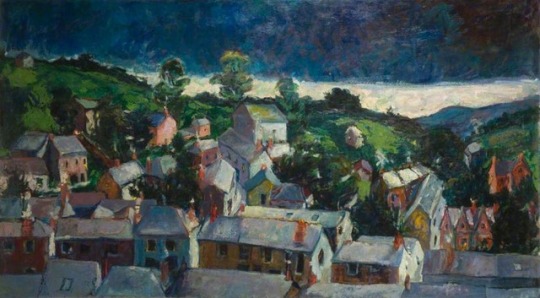
Adrian Ryan (1920-98), British. Trained at the Slade School of Art; Newlyn School of Cornish Artists.
Dawn, Newlyn, Cornwall, c.1952, oil on canvas (The Potteries Museum and Art Gallery, Stoke-on-Trent, Staffordshire, UK).
13 notes
·
View notes
Photo
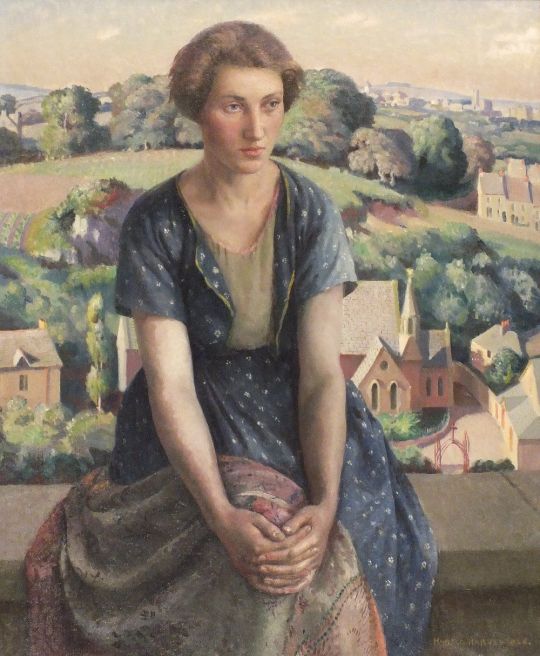
Harold Harvey - A Summer Evening (Evelyn), 1926, oil on canvas
Harold C. Harvey (1874 - 1941) was a Cornish impressionist painter. He painted in oils and watercolours. Harvey was born in Penzance, Cornwall, the son of a bank manager. Harvey studied painting at the Penzance Art School under the Irish born painter, Norman Garstin. He then attending the Academie Julian in Paris between 1894 and 1896. He began his career exploring social realism and impressionism by painting local fishing and agricultural scenes. Harvey married Gertrude Bodinnar in 1911 in Newlyn. The couple had met when Gertrude posed for Harvey. She also became a painter, and was particularly interested in fabrics. Over the years, Harvey expanded his repertoire to include a wide range of subjects such as still lives, interiors, portraits, landscapes, religious themes, and the industrial landscape of Cornwall.
#Harold Harvey#Harold C. Harvey#cornish artist#cornish painter#british painter#newlyn painter#newlyn school#portrait#woman#1926#1920s#oil on canvas#oil painting#impressionism#realism#naturalism
37 notes
·
View notes
Photo
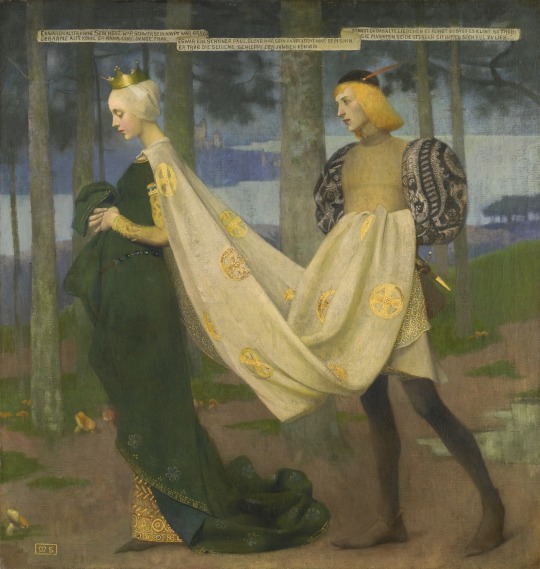
The Queen and the Page by Marianne Stokes
'It was a page without renown,
Blonde was his hair, light was his mein,
And he bore up the silken gown
Of the young Queen.'
THERE ONCE WAS A KING
Heinrich Heine, 1844
In the 1890s the Austrian-born Marianne Stokes (neé Priendelsberger) was drawn to romances from European folklore and literature for inspiration. In this mode she painted St Elizabeth of Hungary Spinning for the Poor in 1895 and Aucassin and Nicolette in 1898 (Sotheby's, New York, 29 October 1987, lot 190). These pictures contrasted with her earlier Realist style demonstrated in pictures like Lantern Light of 1888 (sold in these rooms 17 May 2011, lot 69).
The quotation inscribed upon the painting is from the 1844 German poem by Heinrich Heine's There Once was a King which told of the fated love of a page for his mistress and her reciprocal love for him. The painting was described as ‘…an imaginative work of great power and beauty, depicting the story of Heine’s poems. The lady is walking through the fair grounds of the palace pleasaunce – her train carried by her attendant and lover. Both are in sumptuous attire, and one hardly knows which to admire the more – the magnificent gold brocading of the Queen’s robes or the exquisite embroidery of the page’s dress. Highly decorative in scheme – charming in colour and elaborate in detail.’ (St Ives Weekly Summary, 11 April 1896) The art critic Wilfrid Meynell wrote of the picture; ‘… In the grêle lady the artist has drawn a clear round-browed Piero della Francesca profile with delicately hollow eyes, expressive of some threat of evil destiny. The feeling in the design of the figure has sweetness and distinction…’ (quoted by Magdalen Evans, Utmost Fidelity, 2009, p.64)
The Queen and the Page was owned by George McCulloch (1848-1907), whose collection of modern art was outstanding. He was an Australian mining engineer whose collection of over 300 paintings included masterpieces by the Pre-Raphaelites Burne-Jones and Millais and the High Victorians Alma-Tadema, Waterhouse, Hacker, Dicksee and Moore but also included a very fine representation of the best of the British Impressionists, Clausen, La Thangue, Gotch, Forbes and Whistler. He owned Stokes’ The Goatherd which was allied in style to the pictures by Bastien Lepage that he also owned. However The Queen and the Page and his other picture by Stokes Primavera, marked a transition between the work by the Pre-Raphaelites and the British Impressionists, capturing the romance of the former and the modern approach to painting of the latter. When McCulloch’s collection was surveyed by a correspondent for the Art Journal in 1897, The Queen and the Page was singled-out for praise; ‘In another picture by Mrs A.S., which hangs in Mr McCulloch’s gallery, we are taken at one step from fact to fiction, from a world of realism to another where fancy reigned. The Page, this second canvas, in no way pretends to record any phase of the life about us. It is purely imaginative, a pretty phantasy treated in the spirit of medieval romance and in feeling and manner akin to the quaint tapestry designed, with the execution of which in bygone centuries great dames occupied their many hours of leisure. This technical character is the outcome of the convention which the artist has adopted in dealing with her subject, a convention based chiefly upon decorative essentials, and disregarding almost entirely the possibilities of realism. The background, against which the figures are relieved, is a landscape indeed, but the trees, the sea, and the distant hills, which are combined to make it up, are treated simply as flat colour surfaces, filling important colour spaces, and by their arrangement providing a pleasant pattern of lines and hues. The figures themselves are in quite consistent with the medieval atmosphere of the picture. In dress, manner and appearance they have litter to connect them with the present day. The pale, wan page with his spare figure and somewhat sorrowful cast of countenance, and the demure princess with her close fitting robe and golden crown, are drawn from a fairy-tale world untroubled by modern thoughts and ways. The artist has made something of a contrast between the two faces, between the expression of hopeless devotion which is worn by the lad, and quiet unconsciousness of the maiden whose train he bears; but the contrast is purely a poetic one, and is not accentuated by the melodramatic touch.’ (A.L.Baldry, ‘The Collection of George McCulloch Esq.’, The Art Journal, 1897, p.72)
10 notes
·
View notes
Text

Mina Arndt - The Red Hat (ca. 1914)
After graduating from Wellington Technical School, Mina Arndt studied in London with Frank Brangwyn and at the artists’ colony in Newlyn, Cornwall, with Harold and Laura Knight. She also lived in Berlin, where she studied with progressive artists Lovis Corinth, her second cousin Julie Wolfthorn and printmaker Hermann Struck. Of these, it was the Germans’ sombre palette and techniques that most influenced Arndt.
Following the outbreak of war in 1914, and brief internment in Germany as a prohibited British alien, Arndt returned to Wellington, where she found an attic studio in Willis Street above Bartlett & Andrew’s photography shop. Early in 1915, in this ‘delightful room with many and quaint accessories’, she held a private exhibition of her overseas and recent paintings, etchings and drawings, probably including The red hat, now her best-known work.
The painting is typical of Arndt’s single-figure compositions that fill the frame. The model, Wellingtonian Daisy Hay, wears a shapely buttoned tunic and is silhouetted by the soft light behind her, which also highlights the thickly painted green wall. Her face is cursorily built up with rapidly hatched brushstrokes, leaving her expression inscrutable, as though she has drifted off while posing. Once it becomes clear that this is not a portrait intended to reveal Daisy’s personality, the eye moves upwards to contemplate her crowning glory — the hat. Its oval form is swathed in a scarf, expressively rendered in crosshatched slashes of deep red paint. Its gorgeous painterliness and hue are enhanced and thrown into focus by the simple flat background of harmonious brown and green. An Auckland Star critic, perhaps failing to appreciate Arndt’s subtlety in using shape and colour, and accustomed to bright post-impressionist palettes of artists such as Edward Friström, found her art ‘a little wantingin colour and lightness’.
In 1917 Arndt married Leo Manoy and settled in Motueka, where she worked and taught from a home studio. She produced memorable domestic images of mothers and children, and also of Māori women washing clothes, which she exhibited throughout New Zealand and Australia until her early death aged forty-one. (source)
67 notes
·
View notes
Photo
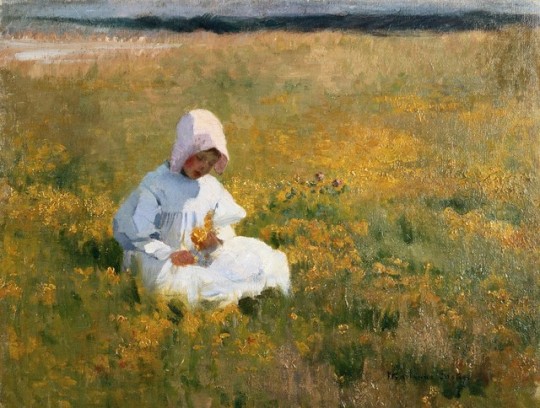
In the Meadow (aka In a Field of Buttercups), Marianne Stokes (1855-1927)
#art#art history#Marianne Stokes#female artists#genre painting#portrait#landscape#landscape painting#flowers#buttercups#Skagen Painters#St. Ives School#Newlyn School#Austrian art#Anglo-Austrian art#19th century art#20th century art
144 notes
·
View notes
Video
<strong>harvey, harold - Marsh Landscape <a href="https://www.flickr.com/photos/amber-tree/">by Amber Tree</a></strong>
Harold Harvey 1874-1941 Engeland
Harold Harvey (1874–1941) was a Newlyn School painter who painted scenes of working class Cornish fishermen, farmers and miners and Cornish landscapes. He was born in Penzance and trained at the Penzance School of Arts under Norman Garstin and the Académie Julian in Paris (1894–1896).
10 notes
·
View notes
Text
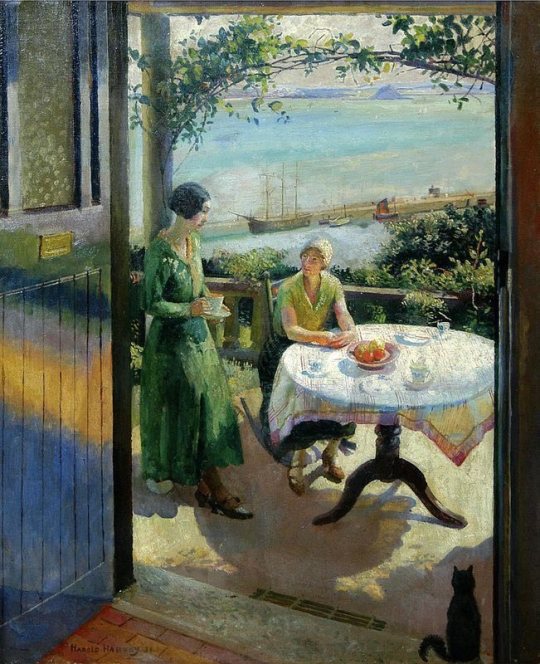

Harold Harvey (1874 - 1941)
One of the Newlyn School artists
6 notes
·
View notes
Photo
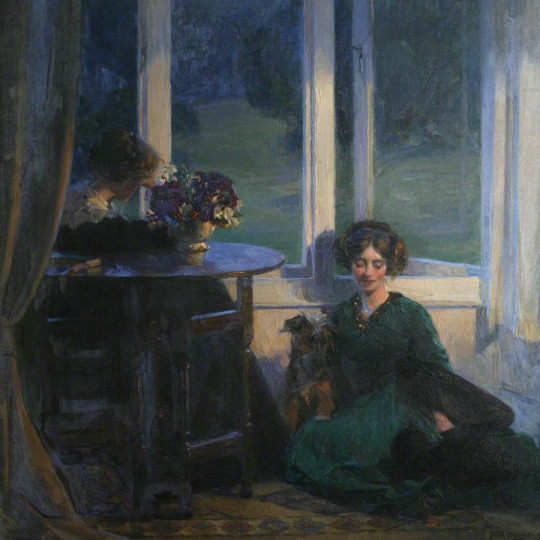

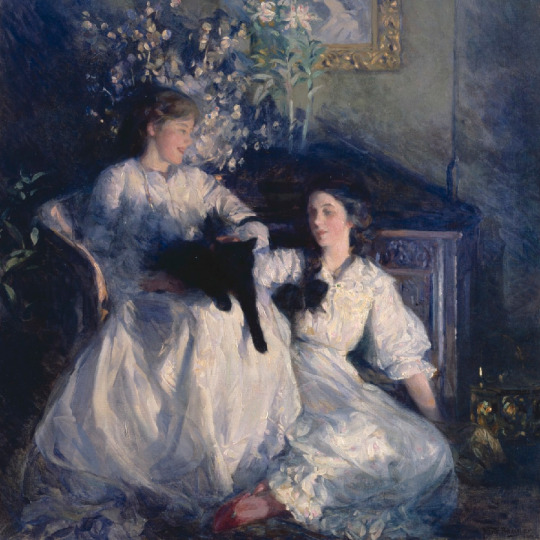
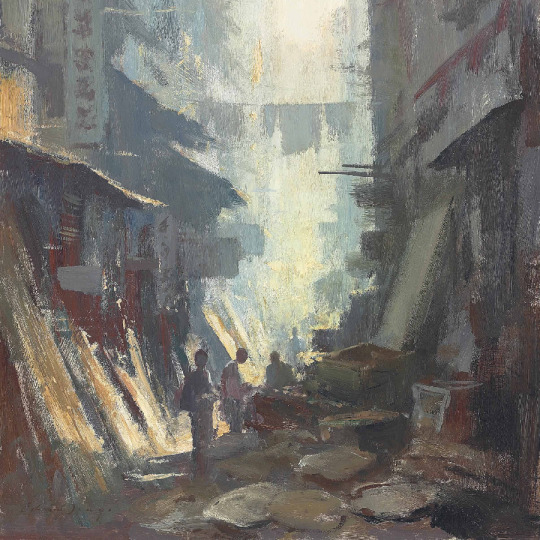
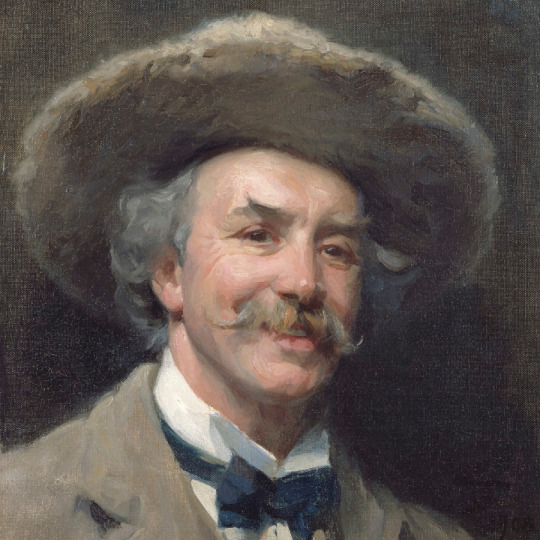
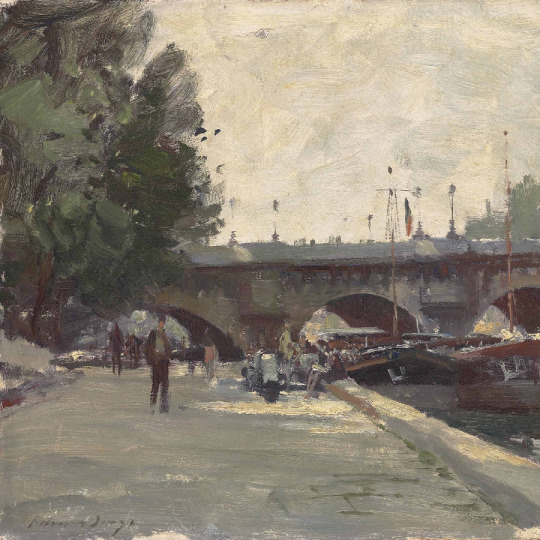
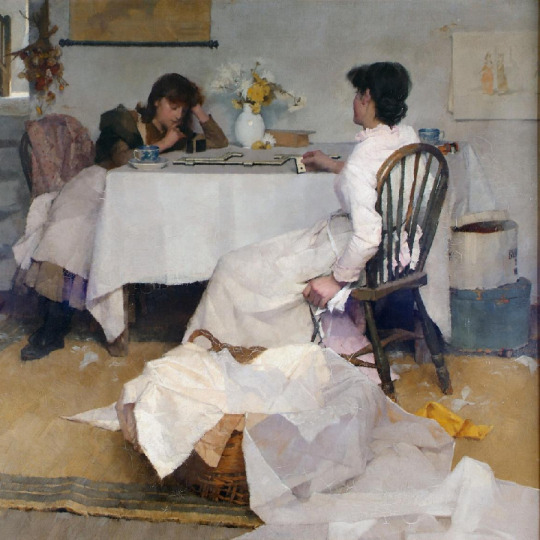
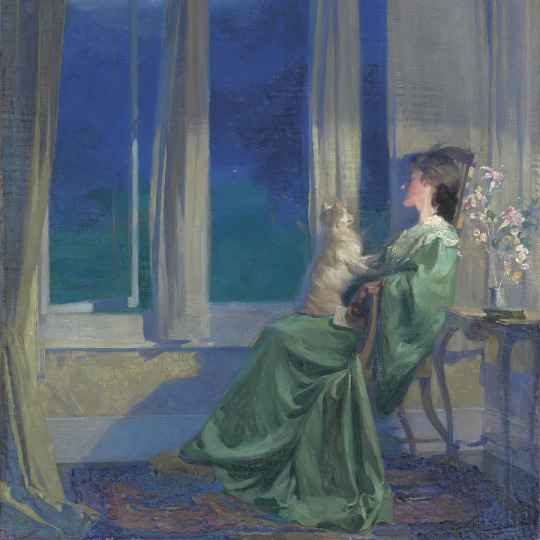
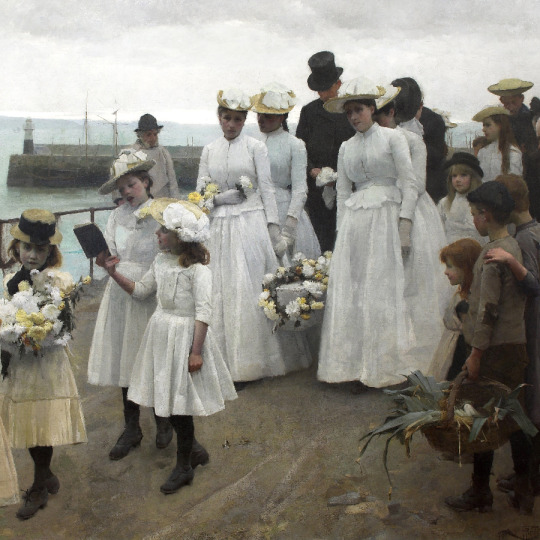
Artist I Like Series
Frank Bramley 1857-1917 was an English post-impressionist genre painter of the Newlyn School.
#Frank Bramley#post impressionism#male artist#English#19th century art#20th century art#artist I like#art history#art#art inspo#fave
90 notes
·
View notes
Photo

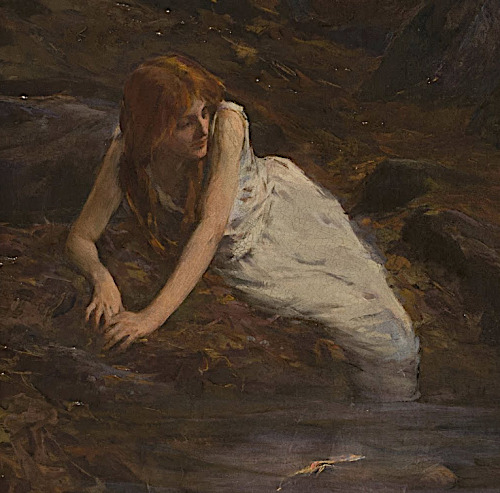
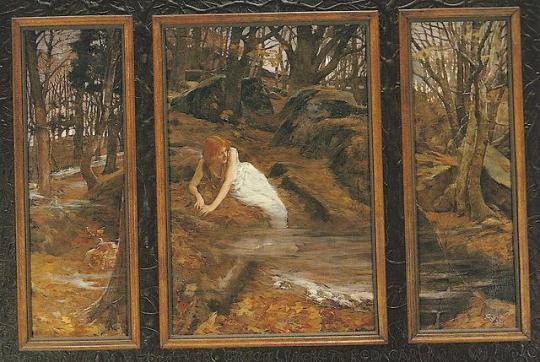
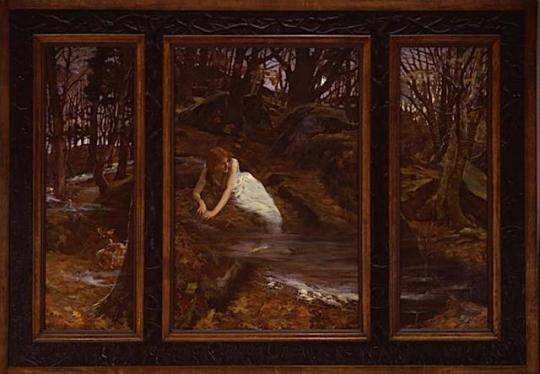
Will-o’-the-Wisp ~ c.1900 ~ Elizabeth Adela Stanhope Forbes (Canadian painter, 1859-1912)
Gallery note: The painting connects her to Helen Allingham as Forbes is illustrating his symbolic poem, The Faeries, and depicts the story of Bridget, who was stolen by the ‘wee’ folk’ and brought up to the mountain for seven years. When Bridget returned to her village, she found that her friends were all gone.
Set in autumn with bare trees silhouetted against a moonlit sky, the triptych’s dark rocks, swirling mist, and eerie glow in the sky convey a mystical quality to this scene featuring Bridget, the ‘stolen child … dead with sorrow … on a bed of flat leaves.’ In the left panel of the painting, little forest denizens, who in Irish legends often entice young girls with sensory pleasures, troop through the forest.
Will-o-the-Wisp displays the tenets of the Newlyn Art School in its meticulous portrayal of natural detail … the elaborately hand-wrought oak frame that incorporates sheets of copper embossed with intertwined branches imitat[e] the painted tree limbs … Lines from Allingham’s poem inscribed along the sides and bottom of the frame allude to the centuries old philosophical dialogue between the relative artistic merits of painting versus poetry (JP, Women Artists, Works from the National Museum, p 66)
Here’s the poem: William Allingham (1824-1889)
The Fairies
UP the airy mountain,
Down the rushy glen,
We daren't go a-hunting
For fear of little men;
Wee folk, good folk,
Trooping all together;
Green jacket, red cap,
And a white owl's feather! Down along the rocky shore
Some make their home,
They live on crispy pancakes
Of yellow tide-foam;
Some in the reeds
Of the black mountain lake,
With frogs for their watch-dogs,
All night awake. High on the hill-top
The old King sits;
He is now so old and gray
He's nigh lost his wits.
With a bridge of white mist
Columbkill he crosses,
On his stately journeys
From Slieveleague to Rosses;
Or going up with music
On cold starry nights,
To sup with the Queen
Of the gay Northern Lights. They stole little Bridget
For seven years long;
When she came down again
Her friends were all gone.
They took her lightly back,
Between the night and morrow,
They thought that she was fast asleep,
But she was dead with sorrow.
They have kept her ever since
Deep within the lake,
On a bed of flag-leaves,
Watching till she wake. By the craggy hill-side,
Through the mosses bare,
They have planted thorn-trees
For pleasure here and there.
Is any man so daring
As dig them up in spite,
He shall find their sharpest thorns
In his bed at night. Up the airy mountain,
Down the rushy glen,
We daren't go a-hunting
For fear of little men;
Wee folk, good folk,
Trooping all together;
Green jacket, red cap,
And a white owl's feather!
73 notes
·
View notes
